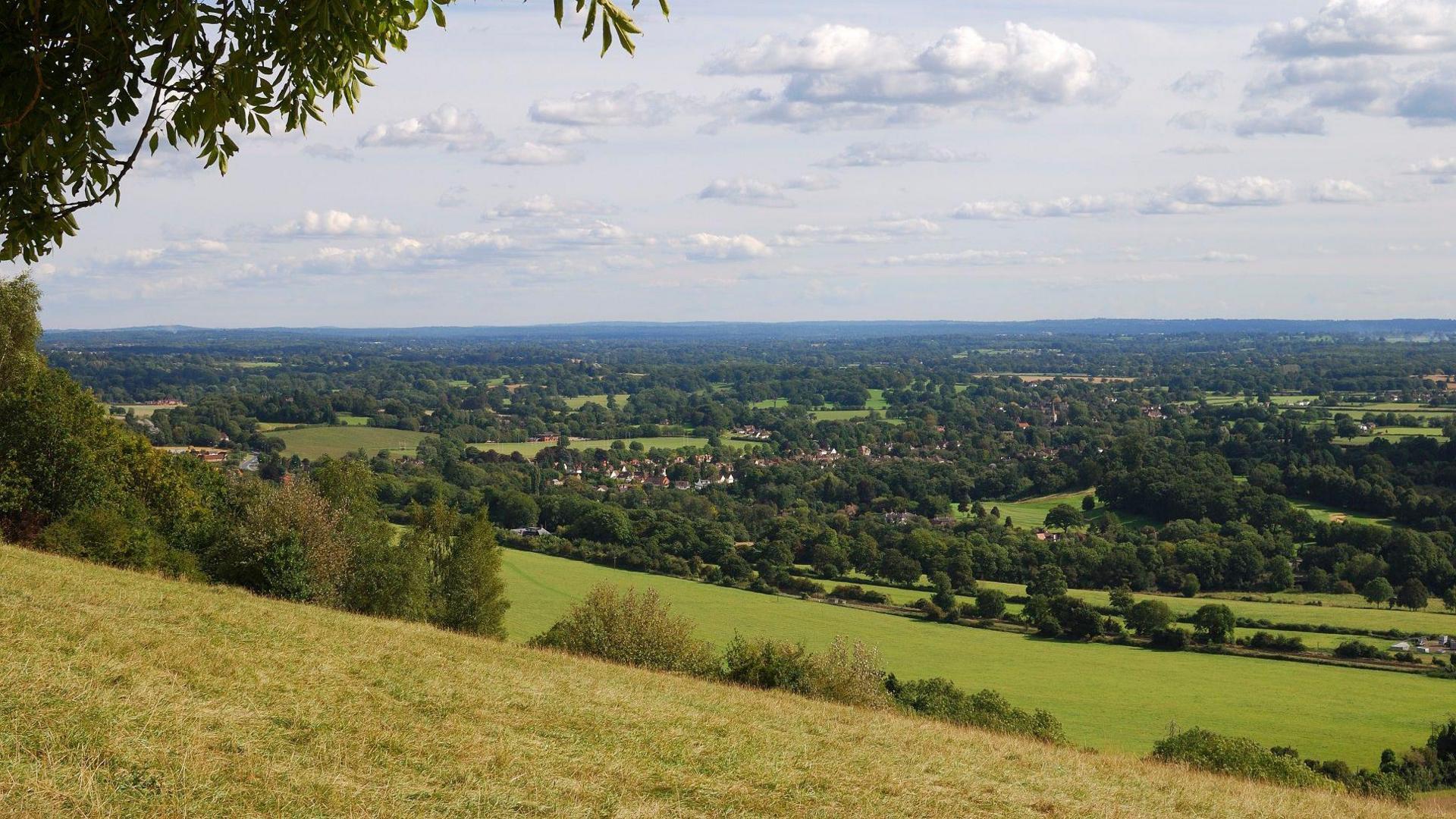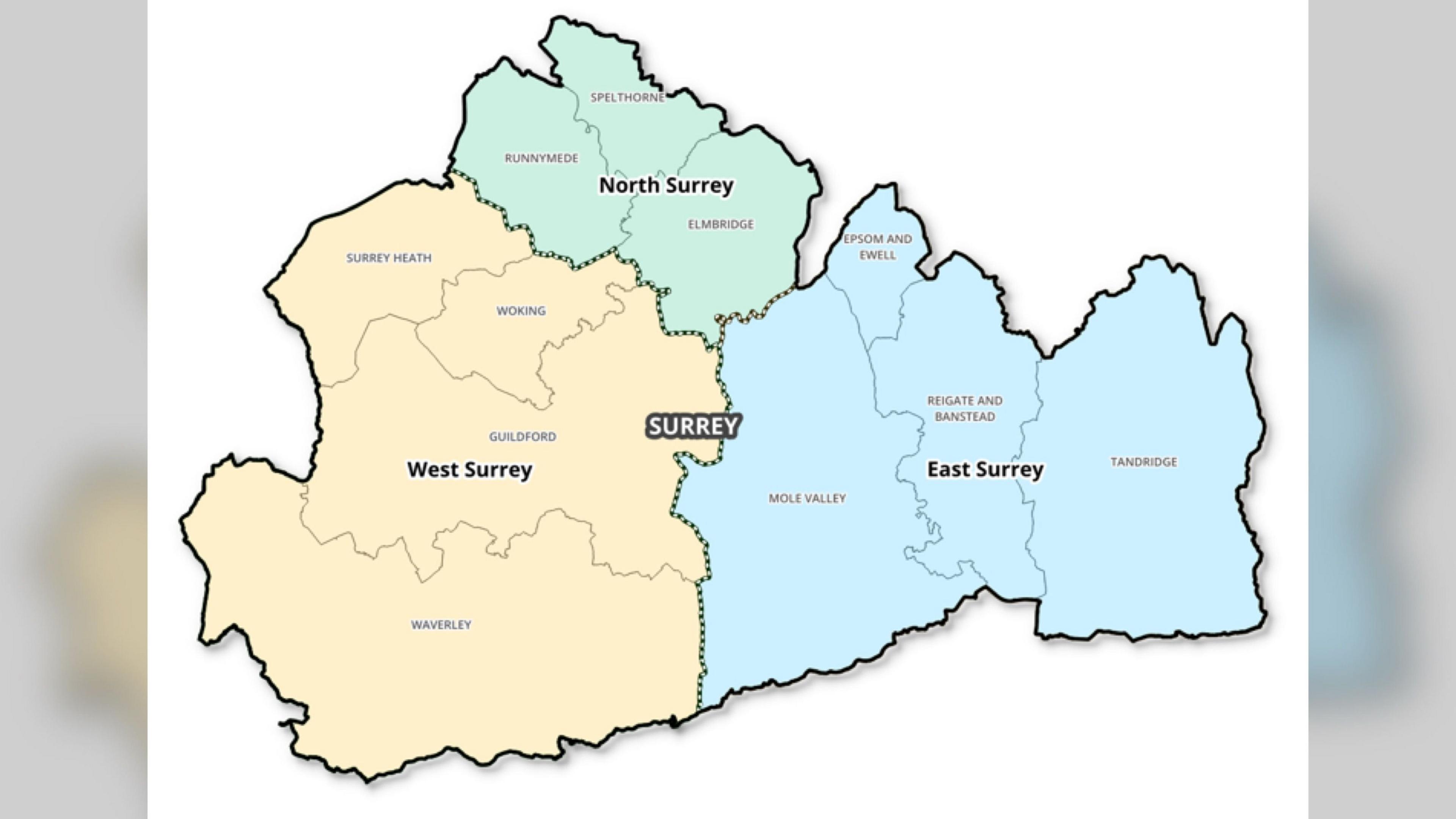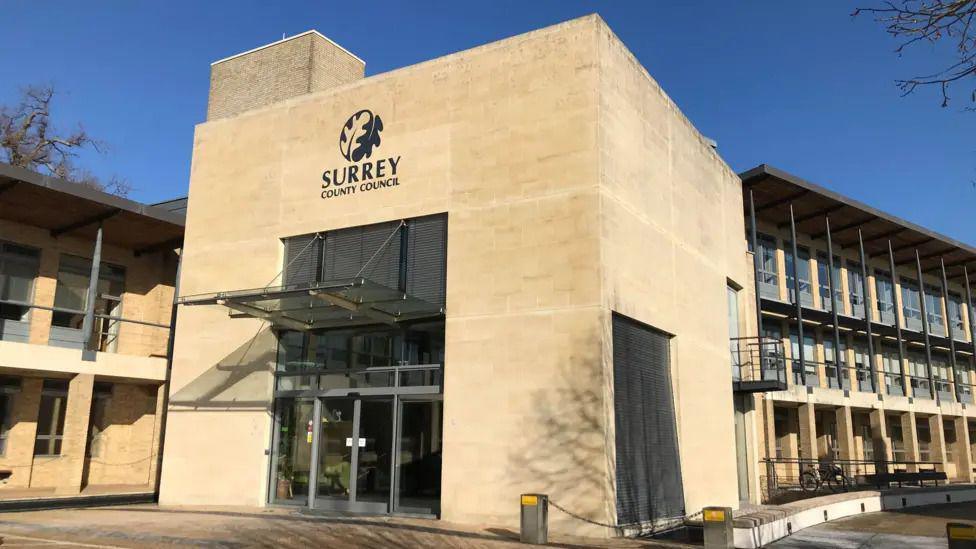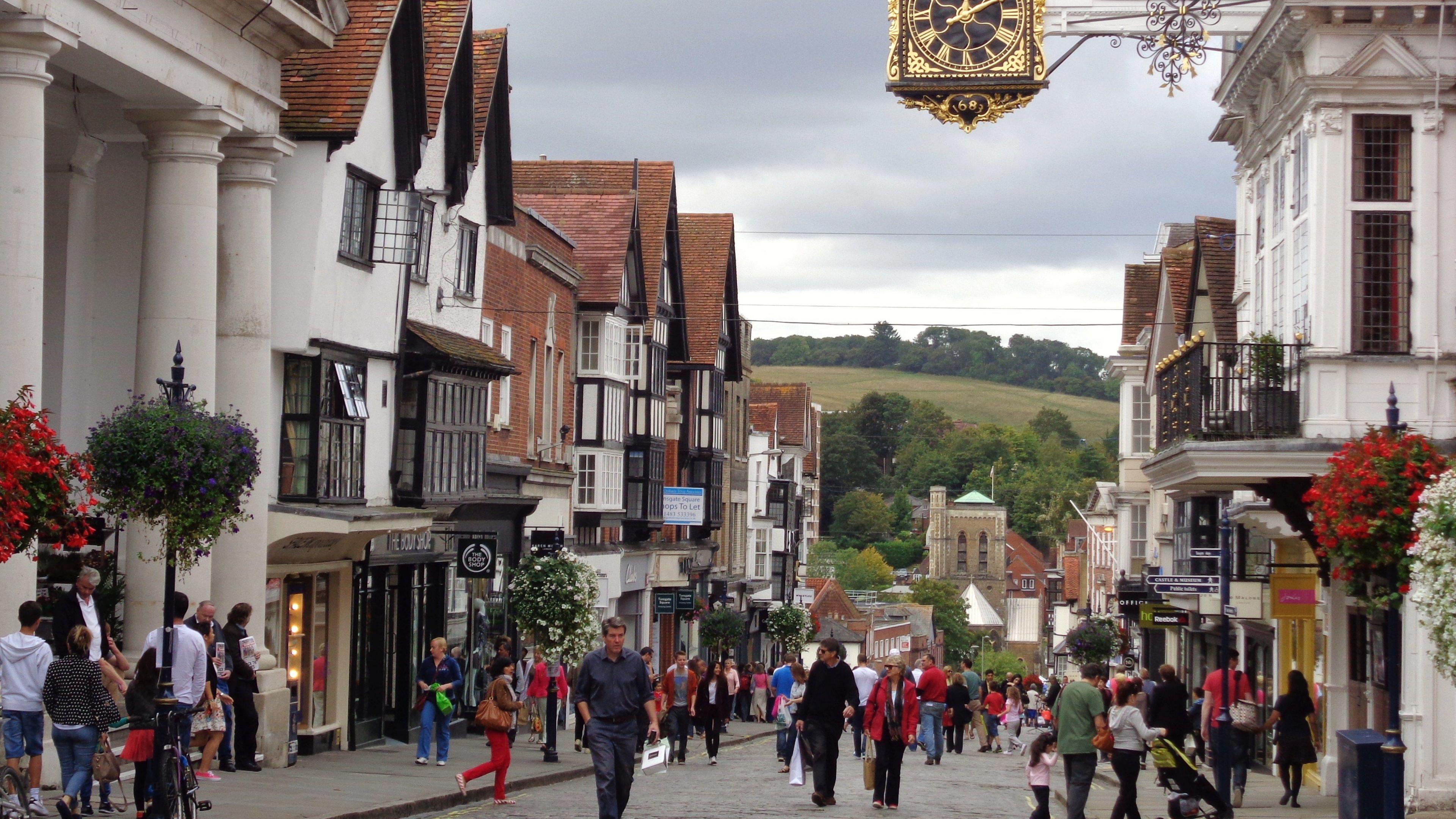Last chance to have say on Surrey councils change

The government is expected to make a decision by the end of 2025
- Published
It is the last day for people in Surrey to take part in a consultation, external on the future of local government.
Ministers, who are unhappy with the current two tier system, want to scrap Surrey County Council (SCC) and 11 borough and district councils and set up new unitary authorities.
Since 17 June, residents, businesses and other organisations have been encouraged to have their say on the two options being put forward.
Here is what is being proposed and the arguments from both sides.
Two unitary authorities
SCC, Elmbridge Borough Council (EBC) and Mole Valley District Council (MVDC) are backing a plan for two new unitary authorities, external.
One would be in the east, merging the areas of Elmbridge, Mole Valley, Epsom & Ewell, Reigate & Banstead and Tandridge, and the other would be in the west, combining Spelthorne, Surrey Heath, Runnymede, Woking, Guildford and Waverley.
SCC, EBC and MVDC argue that having two councils would save money, provide services more simply and effectively, and be a fairer way of dividing up the county.
Those against this model say the new authorities would be less democratically accountable, more remote - leading to a loss of local knowledge - and would be worse for Surrey economically.

The plan for two authorities is backed by Surrey County Council, Elmbridge and Mole Valley
Three unitary authorities
The other nine borough and district councils want to see Surrey split into three new unitary authorities, external.
Under this plan, Surrey Heath, Woking, Guildford and Waverley would be in the west; Mole Valley, Epsom and Ewell, Reigate and Banstead and Tandridge would be in the east; and Runnymede, Spelthorne and Elmbridge would be in the north.
The nine councils have said that having three authorities would lead to greater economic growth, help to maintain local identities and be able to withstand financial shocks.
Opponents say that three unitary authorities would be less financially resilient and mean much higher costs, including when it comes to splitting up how services like adult and children's social care are provided.

Nine borough and district councils are supporting three authorities
Concerns about debt
Overshadowing the whole process is the debt owed by councils like Woking, which declared itself effectively bankrupt in 2023, and Spelthorne, with the amount across Surrey estimated to be more than £5bn.
It has led to concerns about the financial sustainability of the new unitary authorities.
There have been calls to write off the debts before the devolution plans move forward.
On 9 June Deputy Prime Minister Angela Rayner told the Commons that there was no proposal for this to happen, but that the government accepted that councils like Woking have "significant unsupported debt that cannot be managed locally in its entirety".
What happens next?
The government consultation will finish at 17:00 BST on Tuesday.
Minister of State for Local Government and English Devolution Jim McMahon has said he will consider all the different views and the results will be used as to assess the merits of the different proposals.
A decision on the final plans is due to take place by the end of 2025.
If approved, legislation will be passed to allow the changes and elections for new shadow unitary councils will be held in May 2026, with a view for the new councils to start in May 2027.
Follow BBC Surrey on Facebook, external, and on X, external. Send your story ideas to southeasttoday@bbc.co.uk, external or WhatsApp us on 08081 002250.
Related topics
- Surrey County Council
- Tandridge District Council
- UK devolution
- Surrey Heath Borough Council
- Reigate and Banstead Borough Council
- Runnymede Borough Council
- Woking Borough Council
- Spelthorne Borough Council
- Mole Valley District Council
- Elmbridge Borough Council
- Local government
- Guildford Borough Council
- Epsom and Ewell Borough Council
- Waverley Borough Council
- Published17 June

- Published9 June

- Published30 April
